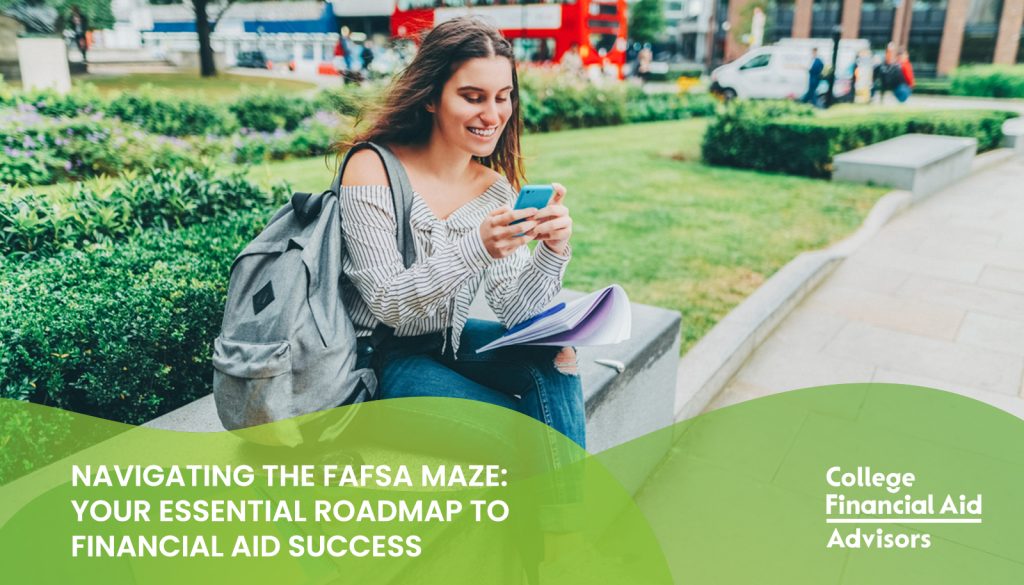How to Plan Your College Admission and Financial Aid Journey: Tips for Application Deadlines
Navigating the college admission and financial aid process can be overwhelming, especially with numerous deadlines to keep track of. From financial aid to the needs of several schools’ admission applications, there’s a lot to pay attention to. Every detail of these applications matters and can make a difference between being accepted and being denied the news you so desperately want! Proper planning and organization are essential to ensure you don’t miss any critical dates during your college application journey. That’s why I’m sharing how to plan accordingly for your college admission and financial aid applications this fall! Understand Different Types of Deadlines When it comes to college applications, there’s a few common deadlines you should know about: Early Decision: Binding agreement to attend if accepted, with deadlines typically around November 1st. This is for students who want to know where they’re going and are ready to commit! Early Action: Non-binding, allows you to apply early and receive a decision sooner, with similar deadlines to ED. The biggest difference is that you do not have to attend the school you applied to here. Regular Decision: Standard application deadline, usually between January 1st and January 15th. Most students will likely apply to schools on this deadline! Rolling Admissions: Applications are reviewed as they are received, with decisions made on a rolling basis. Financial aid applications have their own application due dates. It’s important to file as early as you can – and as accurately as you can – so that you receive the most benefit. Financial aid is often handed out on a first come, first serve basis. So make sure you know these deadlines and meet them! FAFSA (Free Application for Federal Student Aid): In a normal year, the FAFSA will open on October 1st. This past year was different, as changes were made to the form. Experts are unsure how this coming year will play out yet, but regardless – submit as soon as possible to maximize aid opportunities. All schools will require you to file the FAFSA. CSS Profile: Some colleges require this in addition to the FAFSA. Deadlines vary, but it often aligns with admission deadlines. I have lots of tips on the blog about the CSS Profile if you need to complete it for the schools you’re looking at! Institutional Aid: Check each college’s website for specific deadlines for their own financial aid forms. This will definitely vary between colleges and states. Tips for Staying on Track In a recent blog, I discussed creating a master schedule that includes all of these deadlines. Check out those tips here! In addition to creating a master calendar, I recommend a few tricks to help stay on track with your application deadlines: Start Early: Now is a great time to start gathering documents, jotting down ideas for possible essay topics, and gathering personal recommendation letters. The end of summer is also a wonderful time to review your resume and collect information on your grades, volunteer work, and job experience – all of which you’ll need to complete applications. Set personal deadlines: Aim to complete all of your application components days before they’re actually due. This gives you a buffer if something happens and helps you avoid rushing right before a due date, often leaning to errors and incomplete information being submitted. Once you know the deadlines you set for yourself, schedule regular check-ins with your parents, teachers, or guidance counselors to track your progress. Research and understand application requirements: I know that applications, particularly for financial aid, can feel really overwhelming. Make time to research what all of the lingo means and what you need to submit. If you know what you’ve got ahead of you when you sit down to file everything, it will feel way easier! Don’t forget to double check for accuracy before submitting anything! Take Care of Yourself Senior year is an amazing, but stressful time, for many high school seniors. While these applications are very important, I want to stress how important it is to take care of yourself. Stay positive – focus on completing goals and small achievements or milestones along the way. It’s also easy to get sucked into the process and get hyper focused so make time for your loved ones, friends, and hobbies around school and applications! This is one part of your journey into college – so try to enjoy it! Good luck! More about Jodi and College Financial Aid Advisors Jodi is a FAFSA financial advisor who helps with the financial aid process to help families of college students maximize their financial aid. From completing the FAFSA and completing the CSS Profile to reviewing the SAR, responding to requests for verification, comparing financial aid offers and understanding student loan options, Jodi is a fantastic resource when it comes to student financial aid. Schedule a 15 Minute Power Chat to learn more about finding ways to pay for college.










